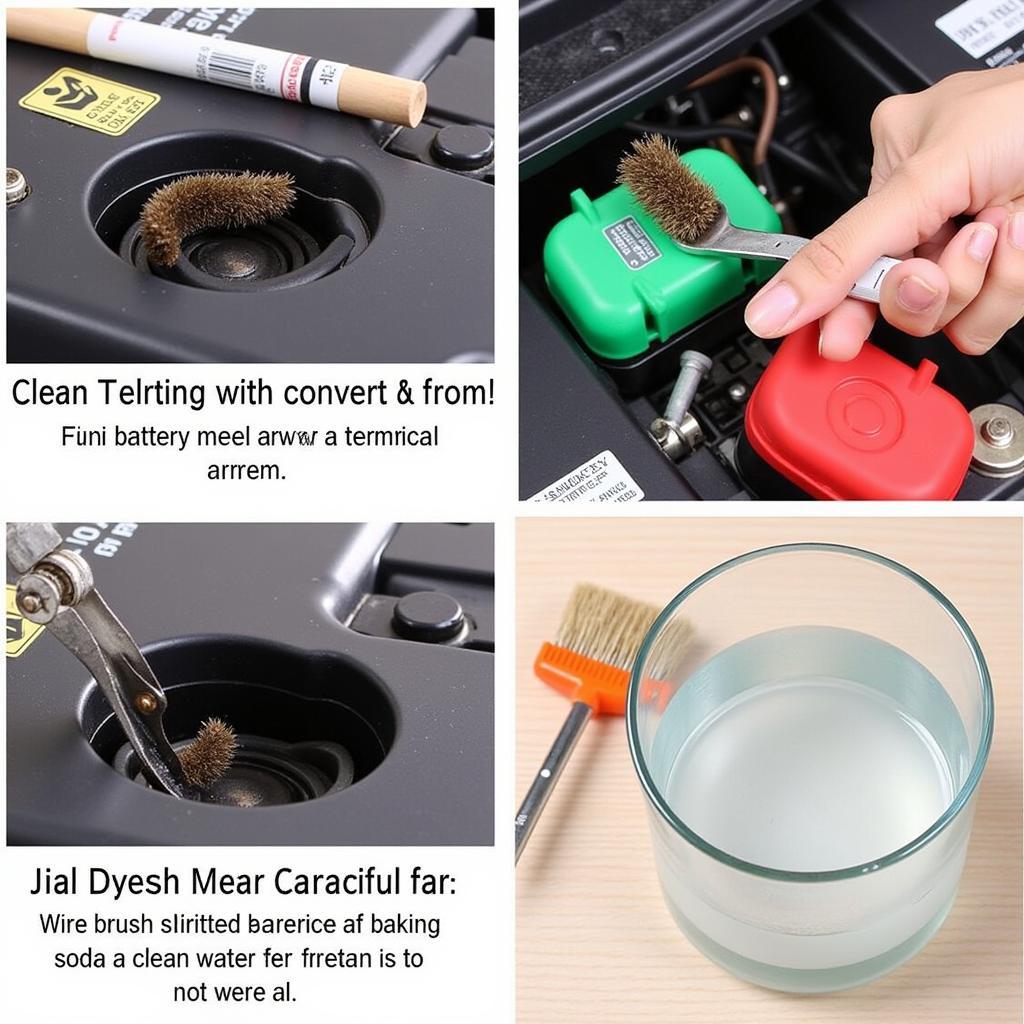Maintenance-free car batteries, a staple in modern vehicles, offer convenience and longevity. But just because they’re “maintenance-free” doesn’t mean they require no attention. Knowing how to check a maintenance free car battery is crucial for preventing unexpected breakdowns and ensuring your vehicle starts reliably. This guide will provide you with the knowledge and tools you need to keep your battery in top condition.
Similar to checking maintenance free car battery, regular inspection is key. Many drivers mistakenly believe that a maintenance-free battery requires absolutely no checks throughout its lifespan. This can lead to unpleasant surprises, especially during extreme weather conditions. While these batteries are designed to minimize water loss and require less frequent attention than traditional batteries, periodic checks are still essential to ensure optimal performance and longevity.
What Does “Maintenance-Free” Really Mean?
“Maintenance-free” typically means you don’t need to add water to the battery cells. These batteries are sealed, using advanced technology to recombine the gases produced during charging, minimizing water loss. This design eliminates the need for regular topping off with distilled water, a common task with older battery types.
How to Check a Maintenance Free Car Battery’s State of Charge
There are several effective methods to check your maintenance-free battery’s charge:
- Visual Inspection: Look for any signs of physical damage, such as cracks, bulges, or leaks. Check the terminals for corrosion. White, powdery residue indicates corrosion and can hinder the flow of electricity.
- Voltmeter Test: A voltmeter provides a precise reading of the battery’s voltage. A fully charged battery should read around 12.6 volts or higher. A reading of 12.4 volts suggests the battery is at about 75% charge. Anything below 12.2 volts indicates a low charge and requires attention.
- Battery Tester: A dedicated battery tester can provide a more comprehensive analysis of the battery’s health, including its Cold Cranking Amps (CCA) rating, which measures its ability to start the engine in cold weather.
- Load Test: This test simulates the strain placed on the battery during starting. A load test can identify weaknesses that a simple voltage check might miss. This often requires specialized equipment and is best performed by a professional.
Why Check a Maintenance-Free Battery?
Regularly checking your maintenance-free battery is essential for several reasons:
- Prevent Unexpected Breakdowns: A failing battery can leave you stranded. Regular checks help identify potential problems before they become emergencies.
- Extend Battery Life: Proper maintenance can significantly extend the life of your battery, saving you money in the long run.
- Ensure Reliable Starting: A healthy battery ensures your vehicle starts reliably every time.
- Identify Other Issues: Battery problems can sometimes indicate other underlying issues with the vehicle’s electrical system.
As an automotive electrical engineer, I always emphasize preventative maintenance. “A simple battery check can save you a lot of hassle and expense down the road,” says John Miller, Lead Automotive Electrical Engineer at Advanced Auto Solutions. Regular checks are a small investment for peace of mind.
 Testing a Maintenance-Free Car Battery with a Voltmeter
Testing a Maintenance-Free Car Battery with a Voltmeter
Common Questions about Checking a Maintenance-Free Car Battery
How often should I check my maintenance-free battery? It’s recommended to check your maintenance-free battery at least every six months, or more frequently in extreme temperatures.
Can I jump-start a maintenance-free battery? Yes, you can jump-start a maintenance-free battery using the same procedure as with a traditional battery. However, always follow the manufacturer’s recommendations.
What are the signs of a dying maintenance-free battery? Signs include slow engine cranking, dim headlights, and electrical issues.
Maintaining Your Maintenance-Free Battery
While these batteries require less maintenance, a few simple practices can help prolong their lifespan:
- Keep the terminals clean: Regularly clean any corrosion from the battery terminals using a wire brush and a baking soda and water solution.
- Ensure proper charging: Make sure the vehicle’s charging system is functioning correctly.
- Avoid extreme temperatures: Extreme heat and cold can shorten battery life.
This mirrors information found in resources like first time car owner’s maintenance musts which highlight the importance of regular checks for all vehicle components. Taking proactive steps to maintain your battery can significantly improve its performance and lifespan.
 Cleaning Car Battery Terminals with a Wire Brush
Cleaning Car Battery Terminals with a Wire Brush
Conclusion
Knowing how to check a maintenance-free car battery is crucial for maintaining its health and preventing unexpected issues. Regular inspections, along with a few simple maintenance practices, can significantly extend the battery’s life and ensure reliable starting. By following the tips and guidelines presented in this guide, you can take proactive steps to keep your vehicle running smoothly. For any further assistance, feel free to connect with us at AutoTipPro. Our office is located at 500 N St Mary’s St, San Antonio, TX 78205, United States, and you can reach us by phone at +1 (641) 206-8880.
Like the insights provided in reddit car maintenance cost, being informed about your vehicle’s needs can save you money and frustration in the long run. Similarly, considerations for low maintenance hatchback cars in india and lease car maintenance other demonstrate the universal importance of vehicle upkeep.




Leave a Reply